Real War Stories (1987) #1-2 edited by Joyce Brabner.
Real War Stories is the first publication in what would become a signal part of Eclipse’s output over the next few years: Activist political comics (and trading cards). They didn’t publish a lot of these, but these publications got a lot of attention, and if I remember correctly (I read them all at the time) they’re all really good. Let’s take a look and see whether if my memory’s on the fritz.
Huh, I have the second printing of the first issue. Which I guess means that it must have sold pretty well, which is amazing for an anti-military comic book.
Anyway, this first issue is the creation of the Central Committee for Conscientious Objectors who apparently hired Joyce Brabner as the editor. Brabner didn’t have huge comics editing experience at the time, but she’s a good choice.
Most of the stories in the first issue are personal accounts of people who’ve been in the military, so these are “as told by” stories that are then written by somebody else. A typical example is the first story, told by Tim Merrill to Mike W. Barr, and with artwork by Brian Bolland and Mike Farmer. It’s told very straightforwardly and the artwork is just as good as you’d imagine when you read those two names.
I thought that this was going to be a regular anti-war comic, but it’s an anti-military comic book. Many of the stories are about how awful it’s to be in the military because the other people there are such raging assholes. (That’s in addition to it all being a dysfunctional fuck-up of an organisation and all the dying and stuff, of course.)
It’s really refreshing. None of that “respect the soldiers” stuff.
I’m guessing this was the most controversial scene in the book, and it doesn’t even involve killing.
Alan Moore (with Stan Woch, John Totleben and Steven Bissette on art) does the most formally interesting piece because of course he does.
And it’s really effective too, because he had me in tears by the end.
Brabner and Rebecca Huntington does a story about a woman who enlisted to join the music division of the army (er, or whatever it’s called) but ends up as an MP and constantly harassed be those around her. It’s text-heavy, but effectively told: Brabner keeps the words of the woman who tells the story front and centre.
We also get advice on what we can do to do something about “it”.
And some facts.
One story that’s not told by anybody in the military is this one by Steve Leialoha. He was a conscientious objector and spent two years in the California Ecology Corps. It’s an interesting story, and his artwork is, as always, so interesting to look at.
Brabner tries the script of the comic she’s just written out on some soldiers going to El Salvador (drawn by Tom Yeates and Mark Johnson), but it doesn’t really get through.
Apparently the first issue had resulted in the Department of Defense sued CCCO to try to stop the distribution of the comic book, and a Lieutenant Colonel John Cullen claimed that there was no such thing as greasing, so I guess I guessed right when I thought that was going to be the one controversial sequence in the book.
The second issue, released four years later, is very different from the first issue. It’s still edited by Brabner, but it’s not sponsored by CCCO, and it’s no longer first-hand accounts from people with experience of being in the military. Instead it seems like it’s mostly fact bombs culled form the archives of Citizen Soldier, which is an organisation that helps people with problems with the military out.
So we get infobombs disguised as comics. Bill Sienkiewicz gives it his best shot, so we get something that’s really readable. And look at that evil face! So evil!
Unfortunately, that’s the standout and the rest are either angry declamations like this Brabner/Wayne van Sant thing…
… or just illustrated verbal diarrhoea like this Greg Baisden/Steven Destefano thing. Destefano does his best with the Alice in Wonderland thing, but this could just have been an essay instead and it’d have read easier.
And some stories veer way off the subject, like this Brabner/Dennis Francis story that’s more about general racism than the military.
Both of these issues are 48 pages long, but the second issue is printed on nice, shiny paper that really makes the colours pop. That’s really handy for the Sienkiewicz piece and this one drawn by Mark Badger. Whatever happened to him? It’s so Mattotti! Nothing can ever be Mattotti enough.
And the story, which rounds out the issue, is by Mark W. Barr, and is about how his father died as the result of poisoning due to not being given protective clothing while handling chemicals in the navy, so it’s almost a first-person account and is the closest to the stuff in the first issue.
Pretty much everything.
So here’s what I think: The first issue is incredibly powerful. The second issue is very dry.
Rich Kreiner in The Comics Journal 128:
Real Stones is a carefully, even lovingly, crafted package edited by Joyce Brabner and produced under the auspices of the Central Committee for Conscientious Objectors.
Toward the announced ends of the sponsoring organization, Real War Stories includes a wide variety of tales from different lands, different times, with differing perspectives, aimed at providing alternative views Of the military for a recruitment-aged audience.
It’s an effective use of the medium, one that I feel better and better about every time I see another slick, patronizing advertisement for the armed services. The care and craft of the project as a whole is obviöus from the very first. Bill Sienkiewicz’ dramatic and complex cover features a military massacre drawn in a crude, childish style, making it immediately plain that Real hr Stories is not going to be Sgt. Fury with more black soldiers. The composition is immediate, effective, and, probably unintentionally, a sly comment on the medium’s juvenile tradition.
‘”The Elite of the Fleet,” in many ways the book’s most successful and “mainstream” piece, leads off. It is a tight and straightfoward rendering of “the story of Tim Merrill, as told to Mike W. Barr, writer, and Brian Bolland and Mark Farmer, artists,” and recounts Merrill’s enlistment in the Navy, his progressive disillusionment with the military, and his campaign to educate and liberate himself through attaining the status of conscientious objector.
[…]
Real War Stories purposefully delivers its message to its intended audience without condescension or insufferable dogmaticism. As such, it’s a real success, a comic book that could make a difference.
These comics haven’t been reprinted or collected, which is a shame.

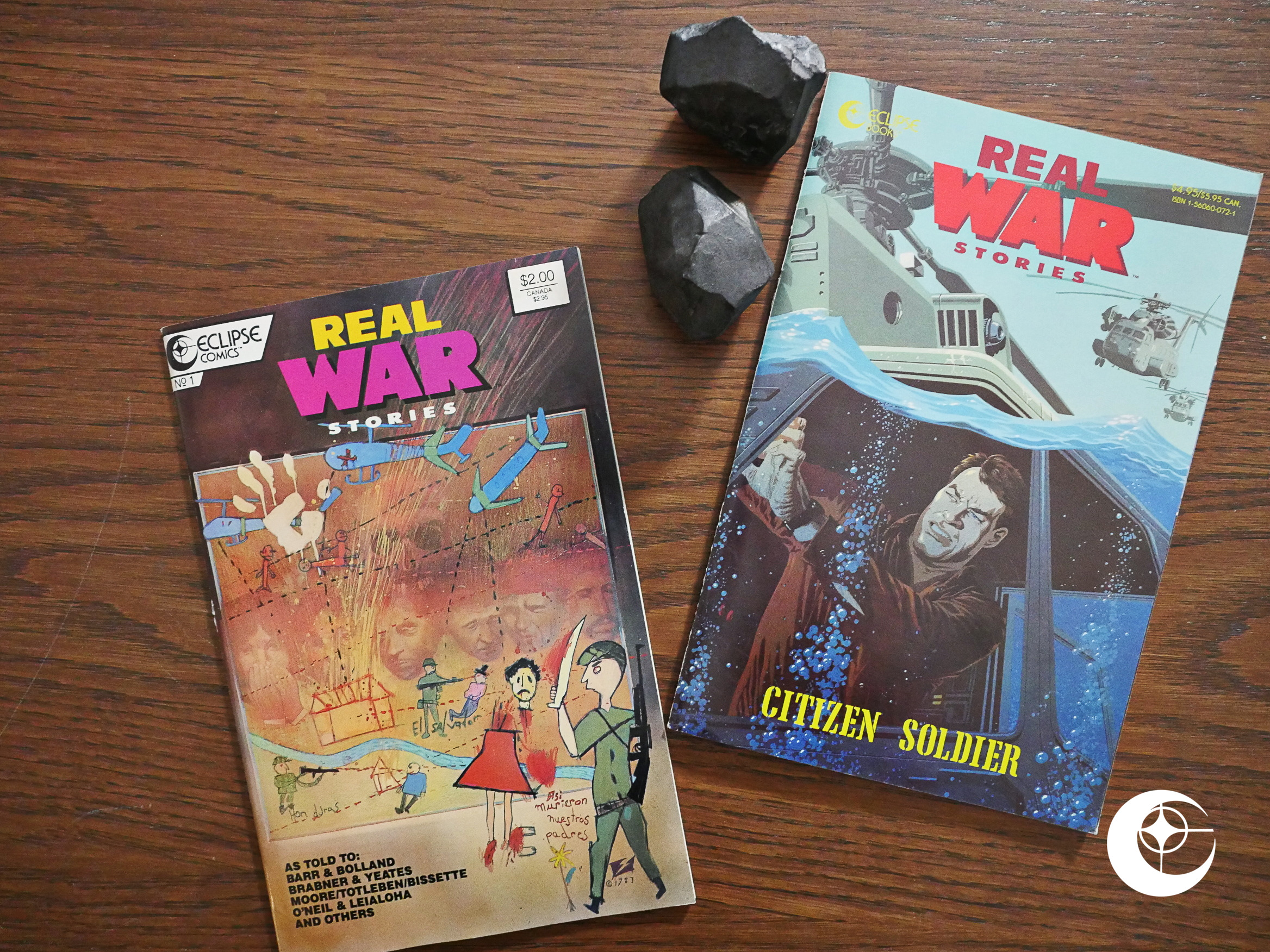
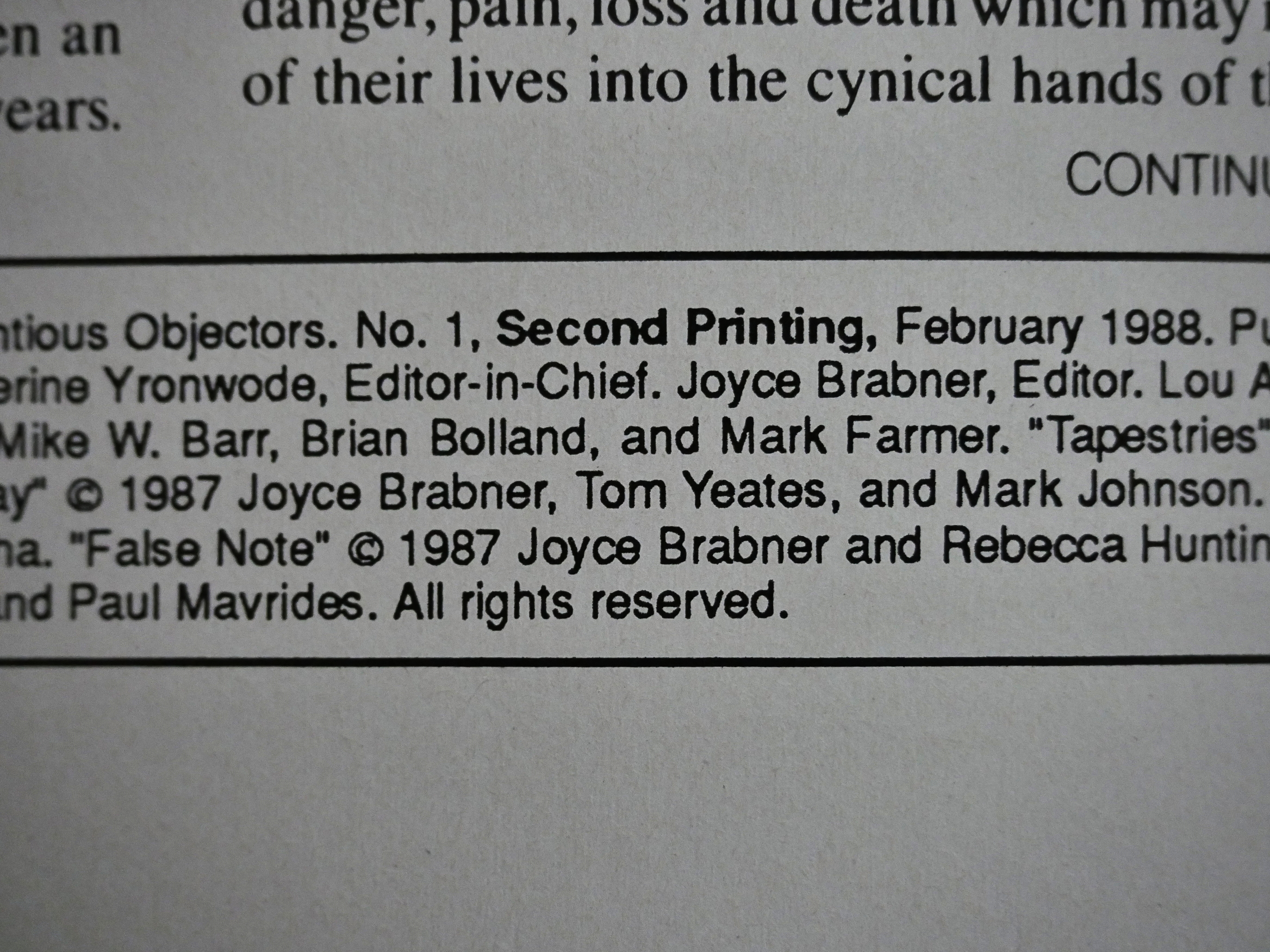
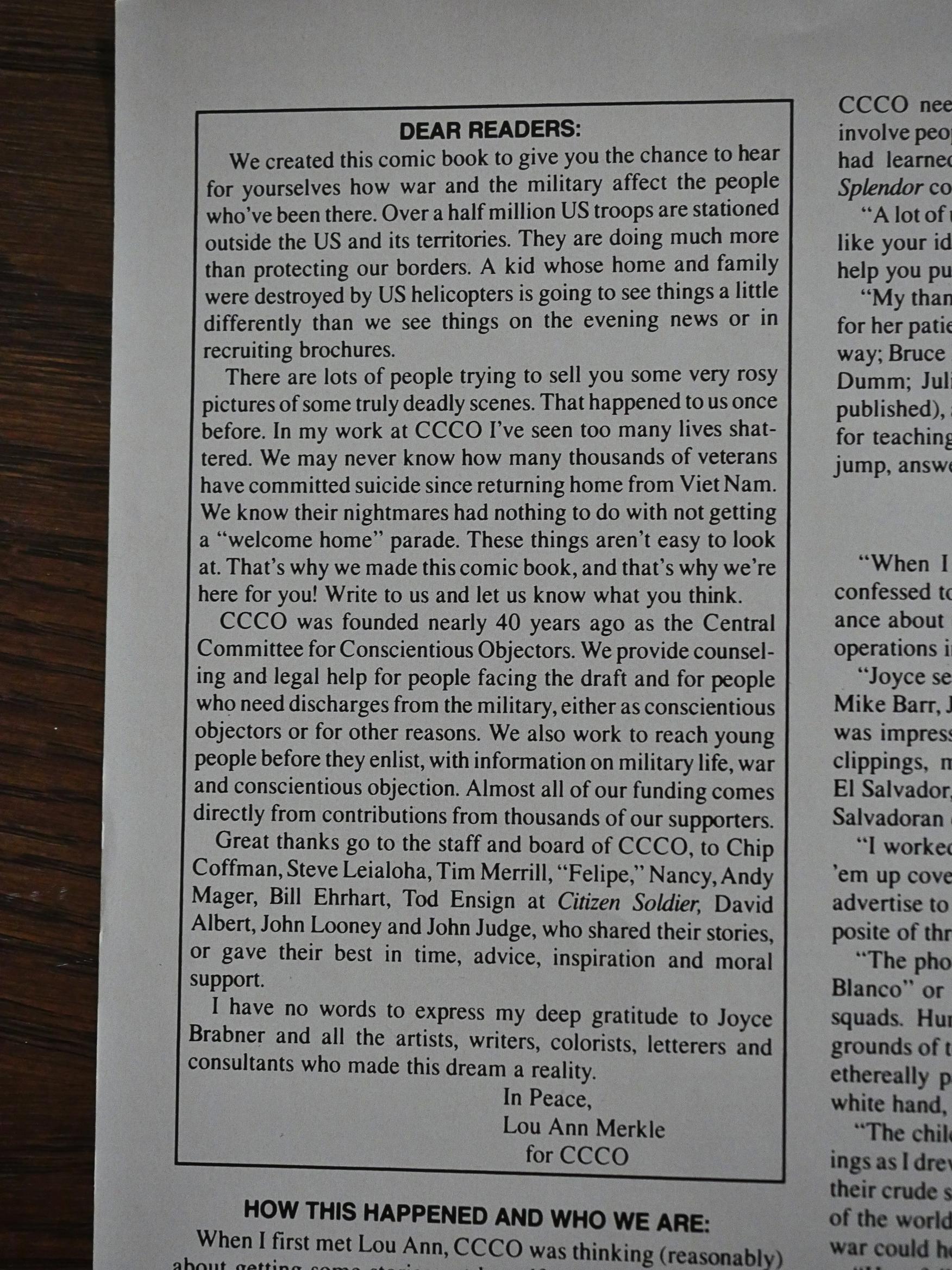
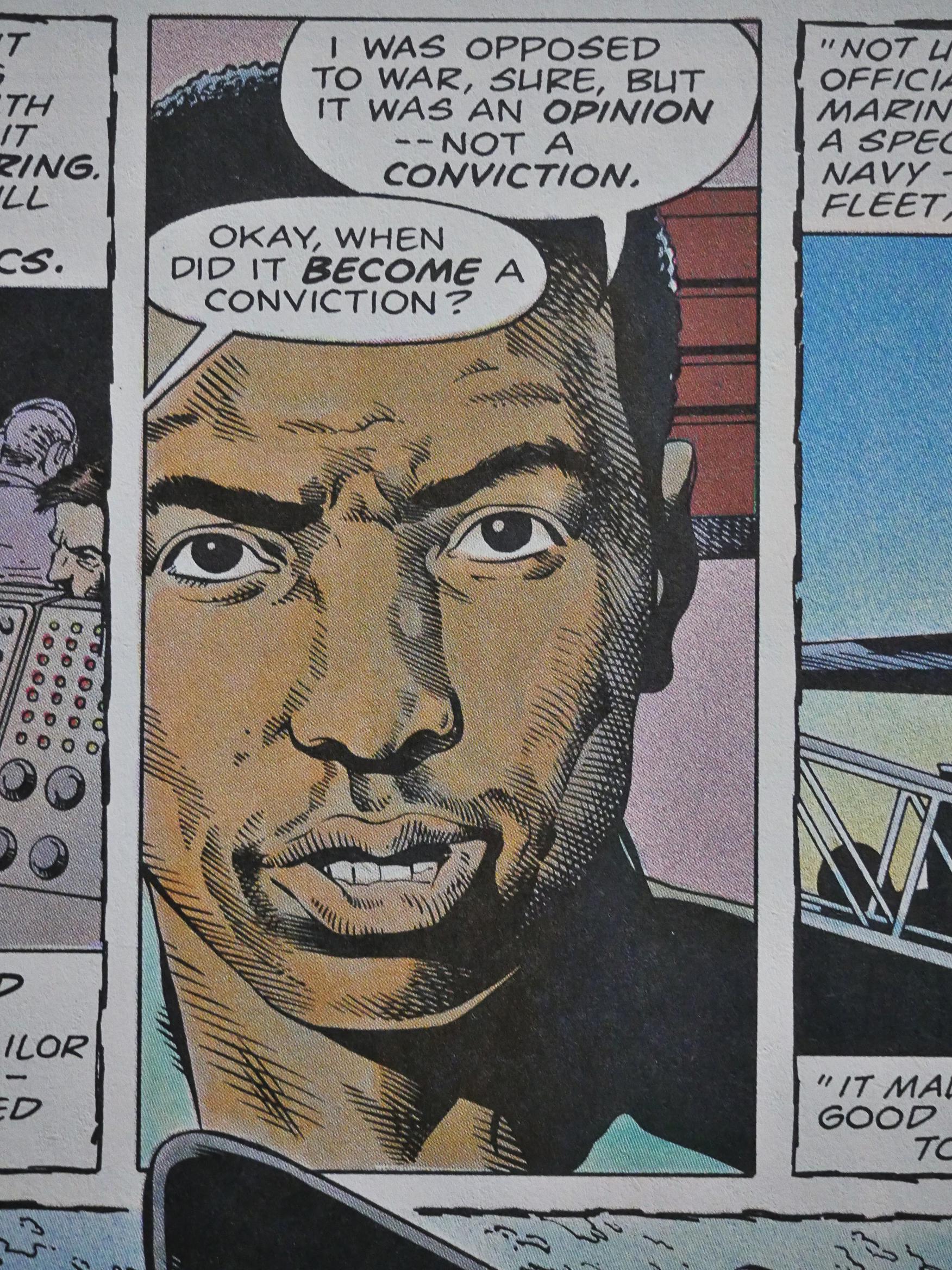
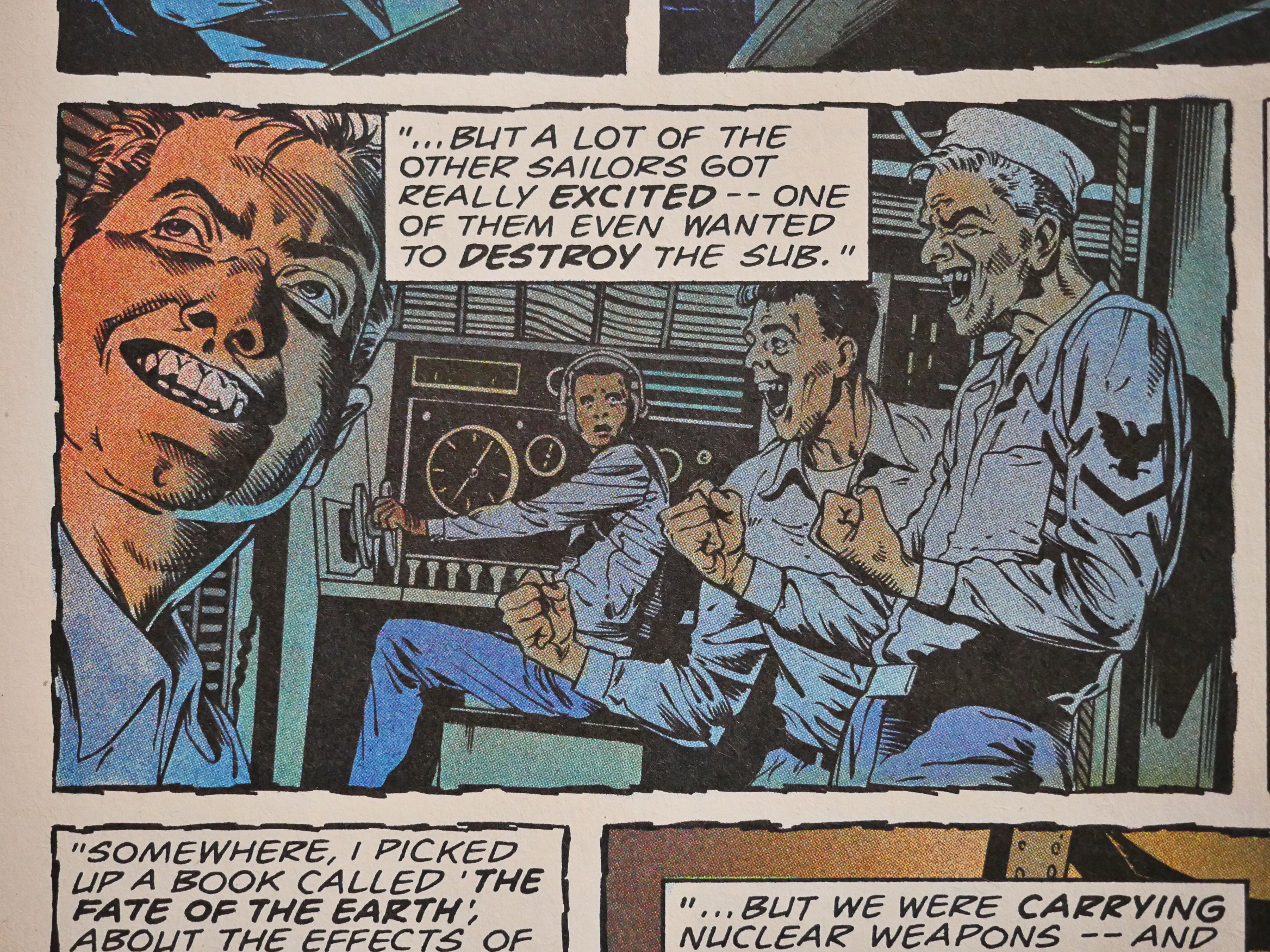
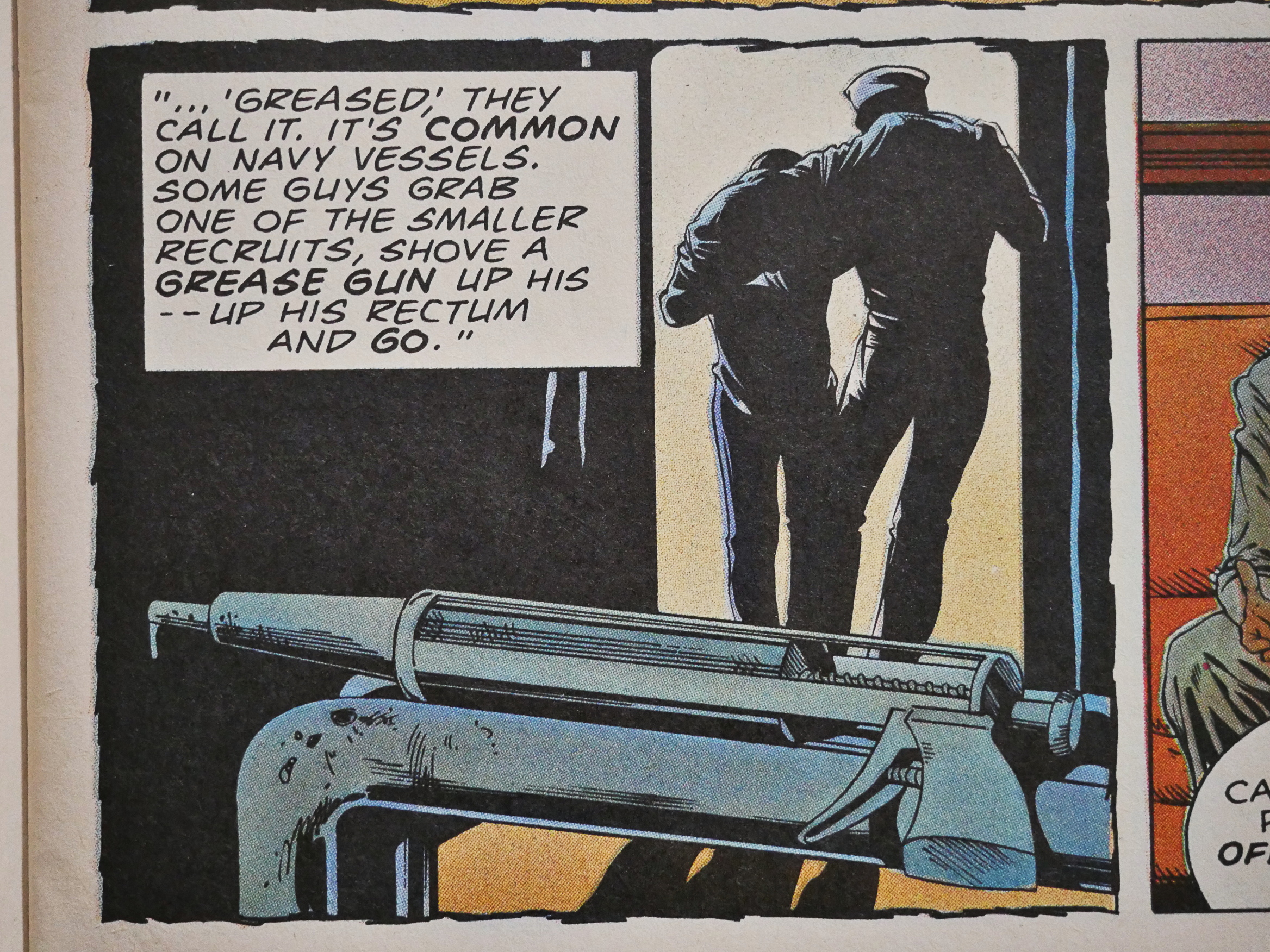
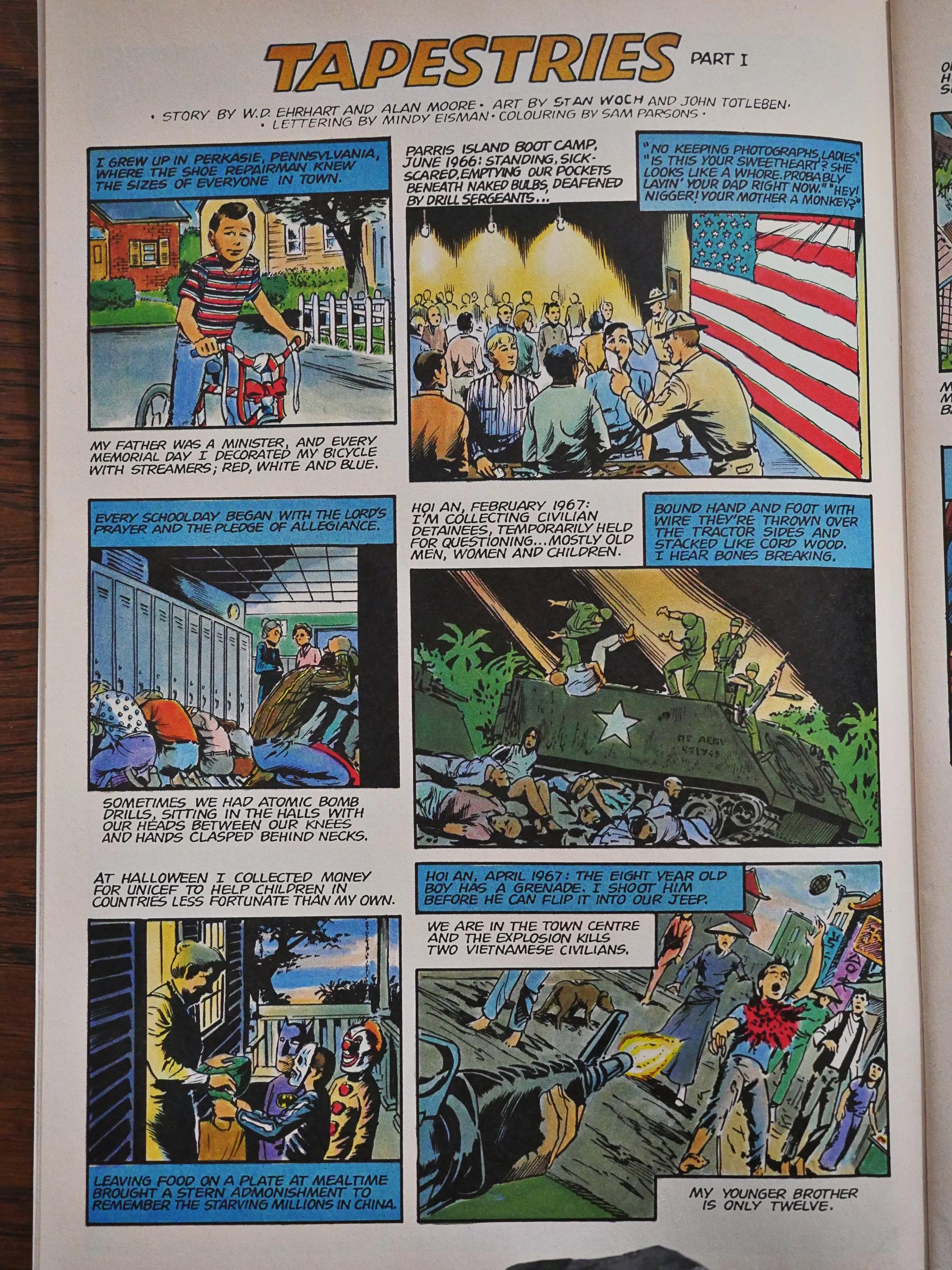
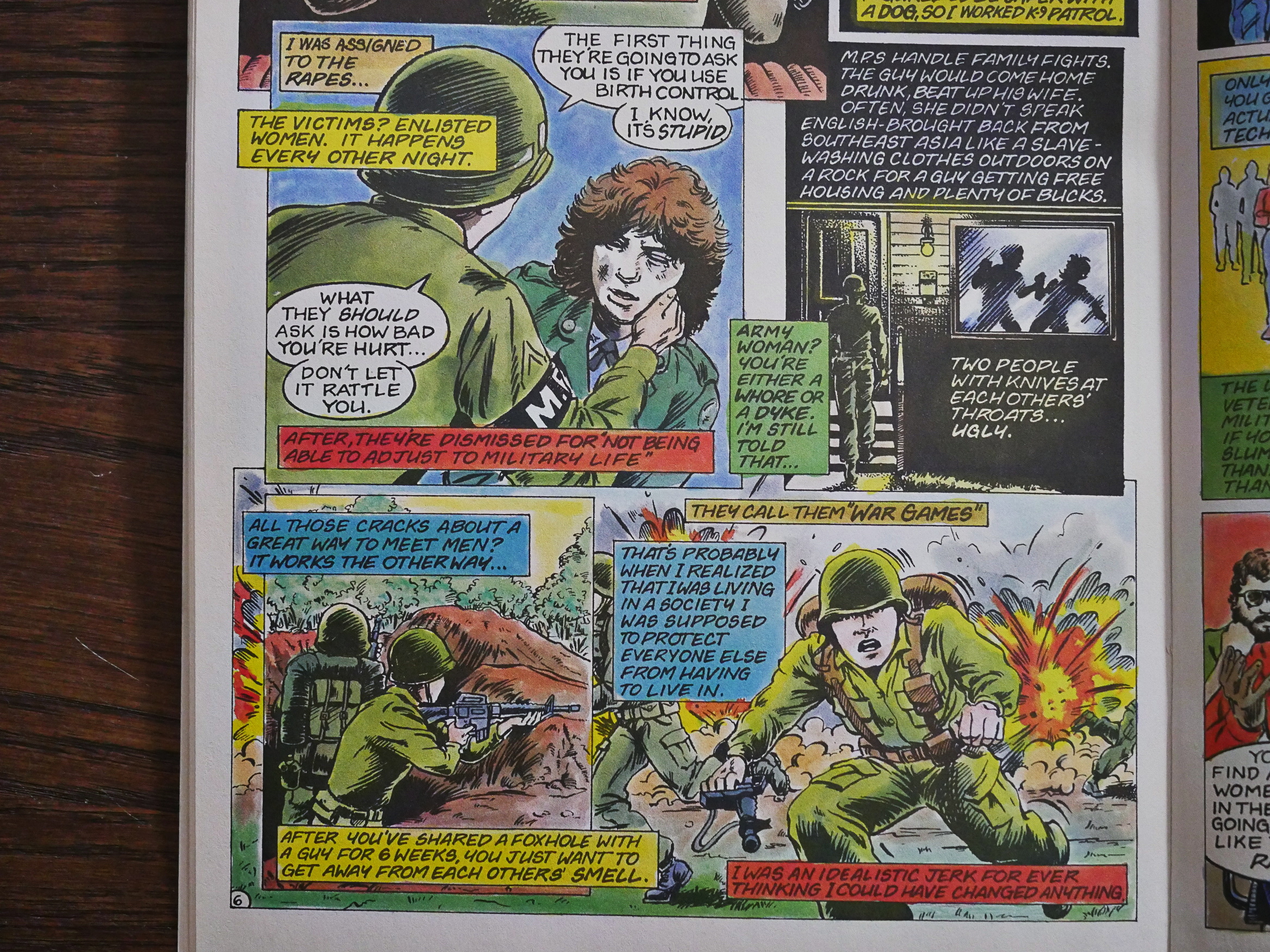
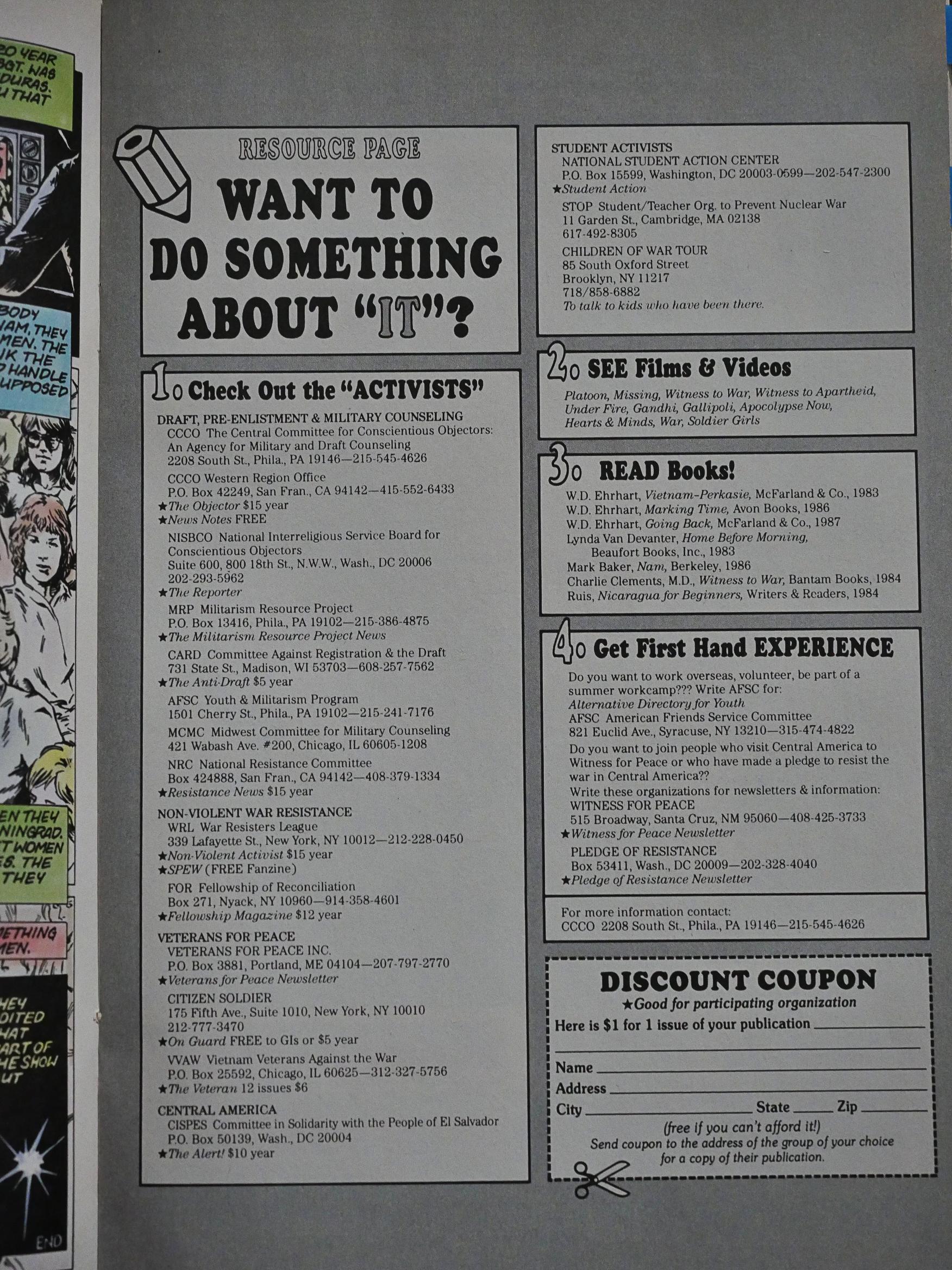

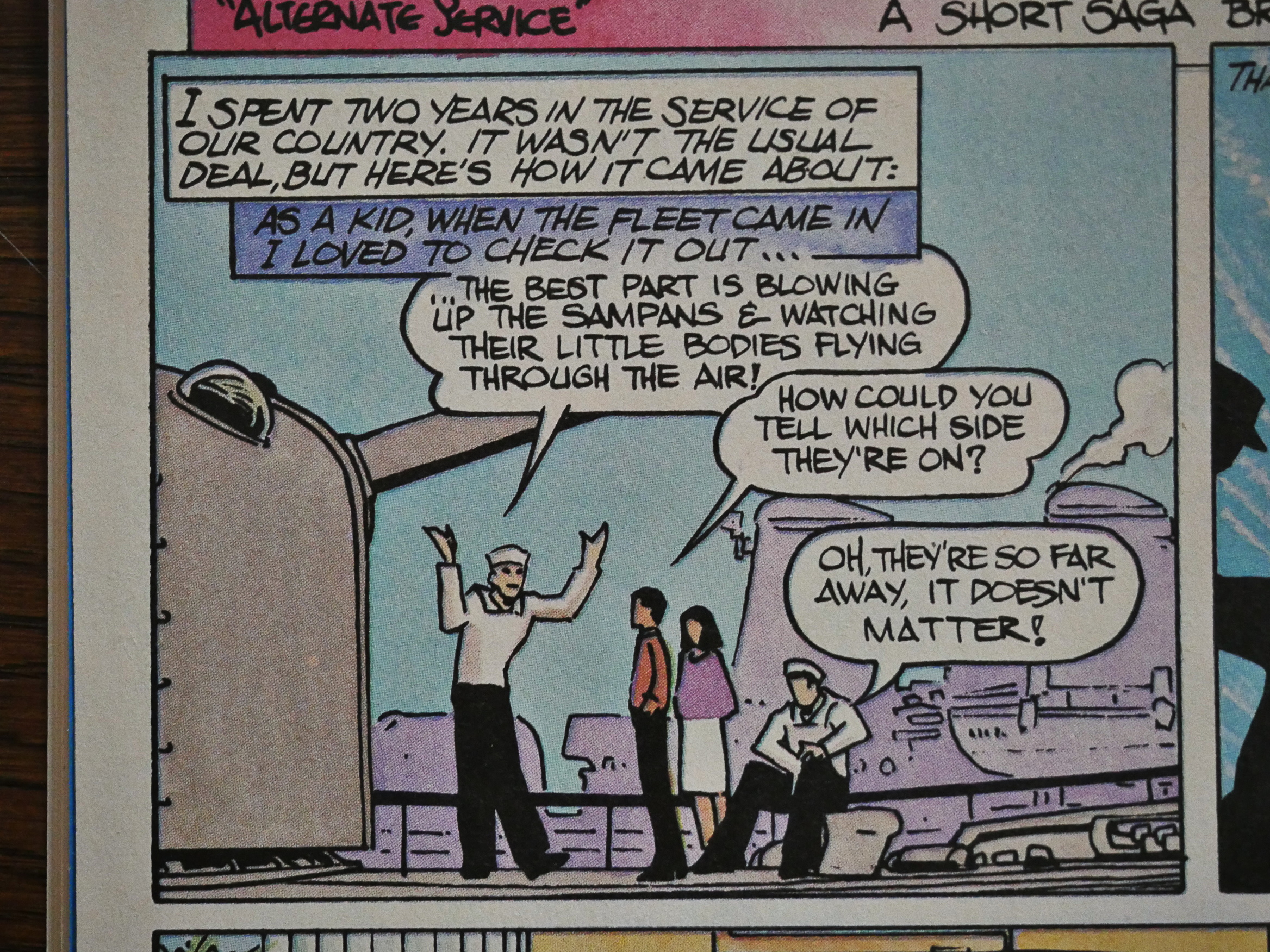
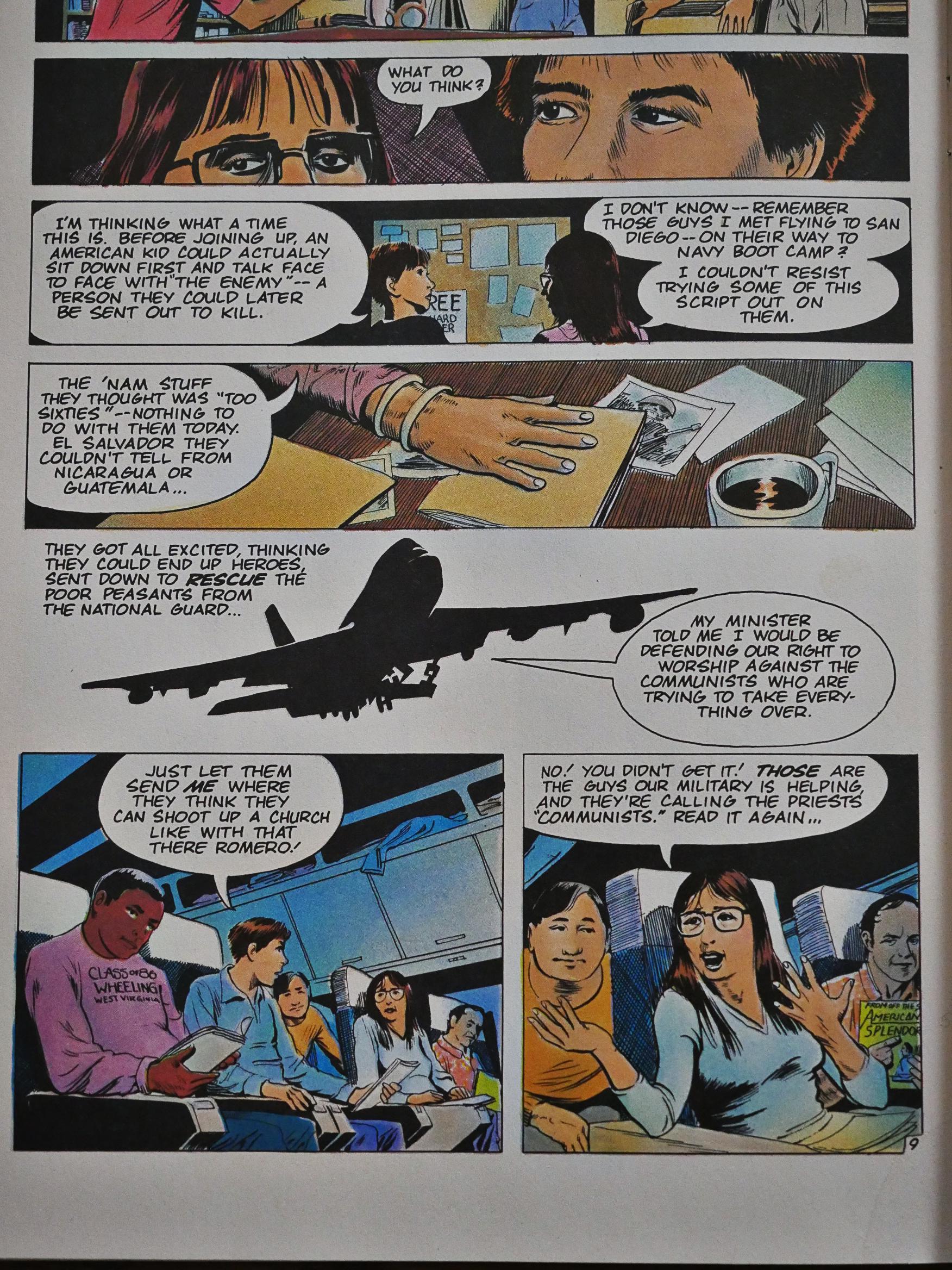

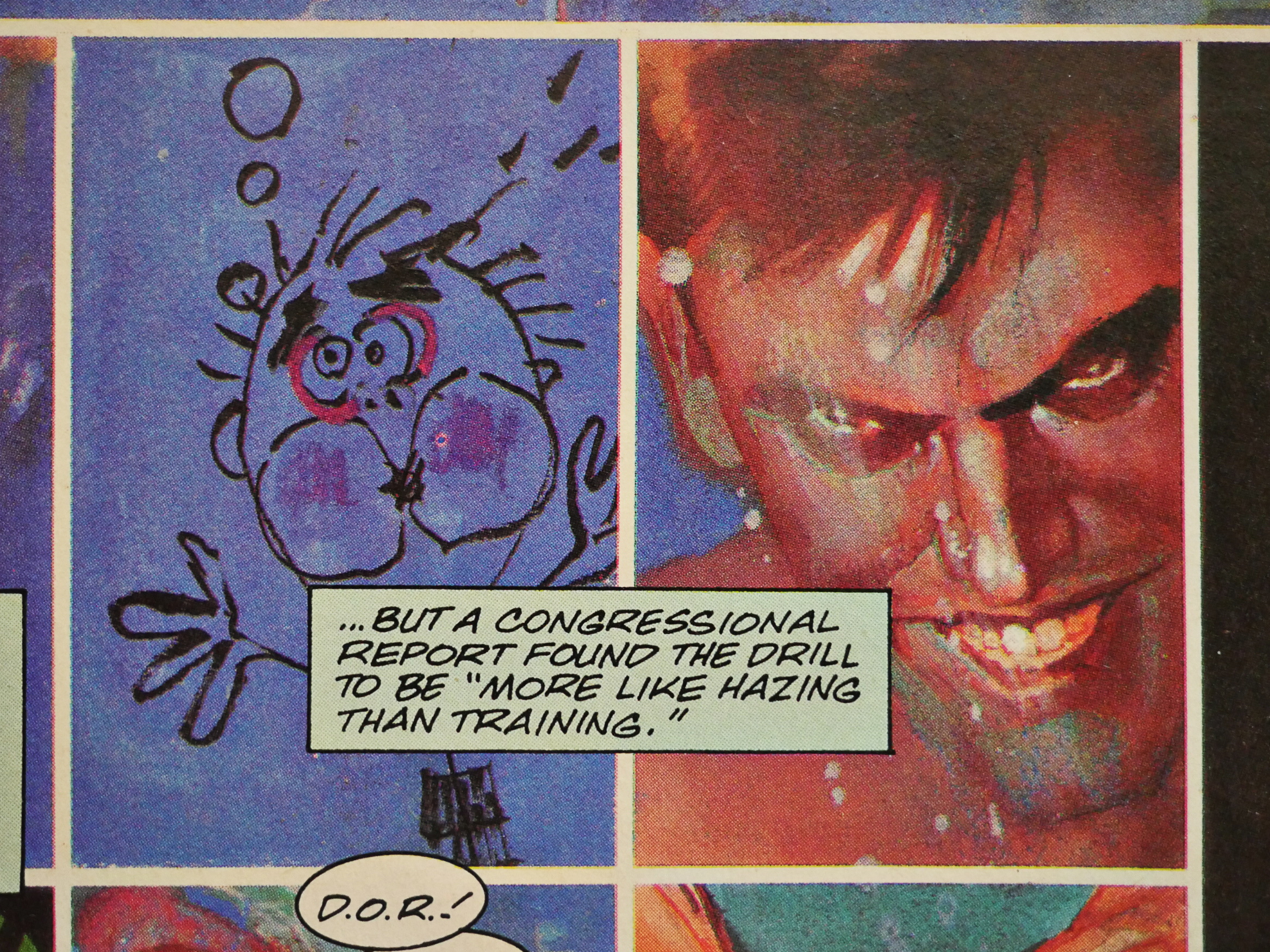
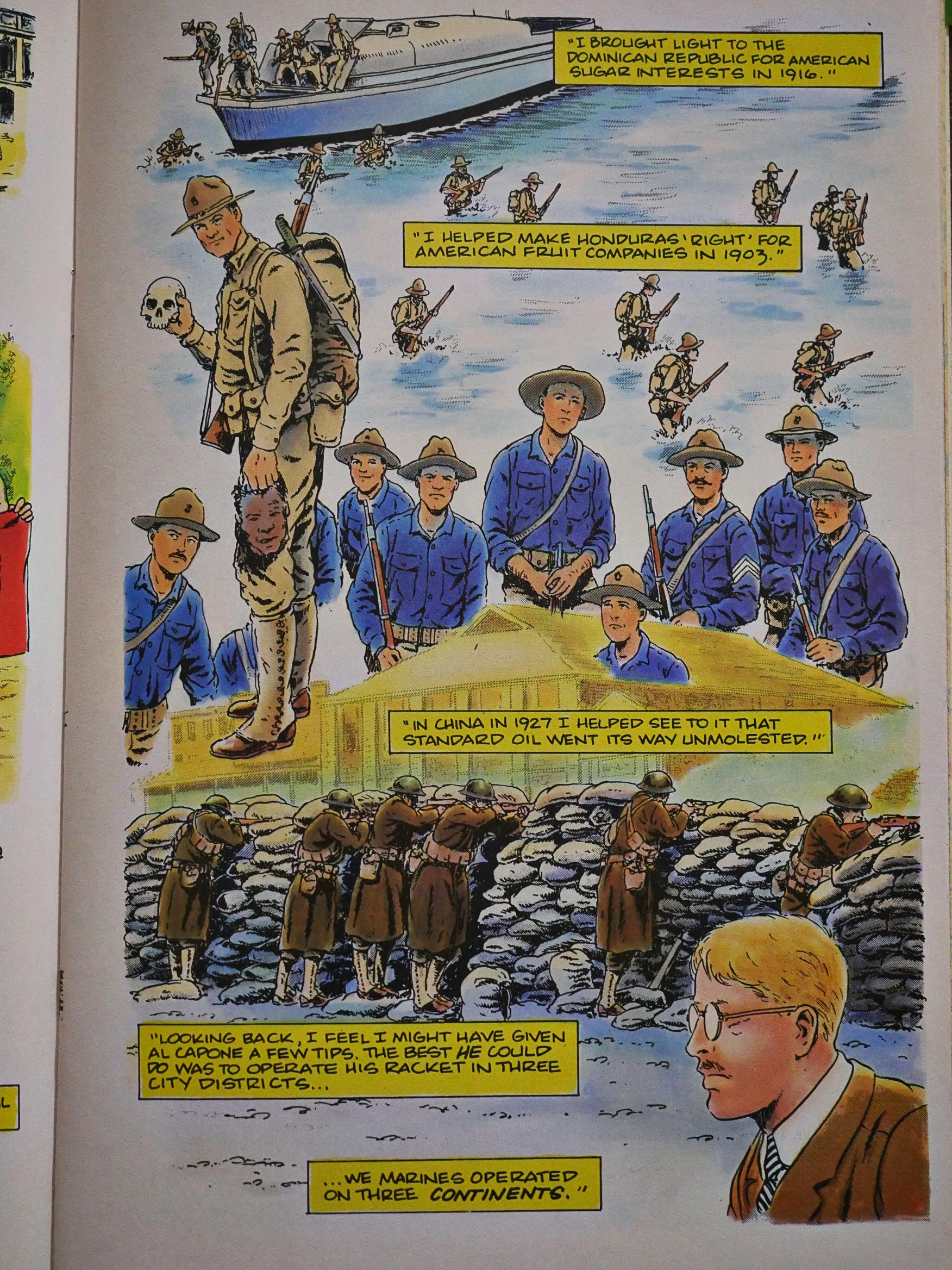
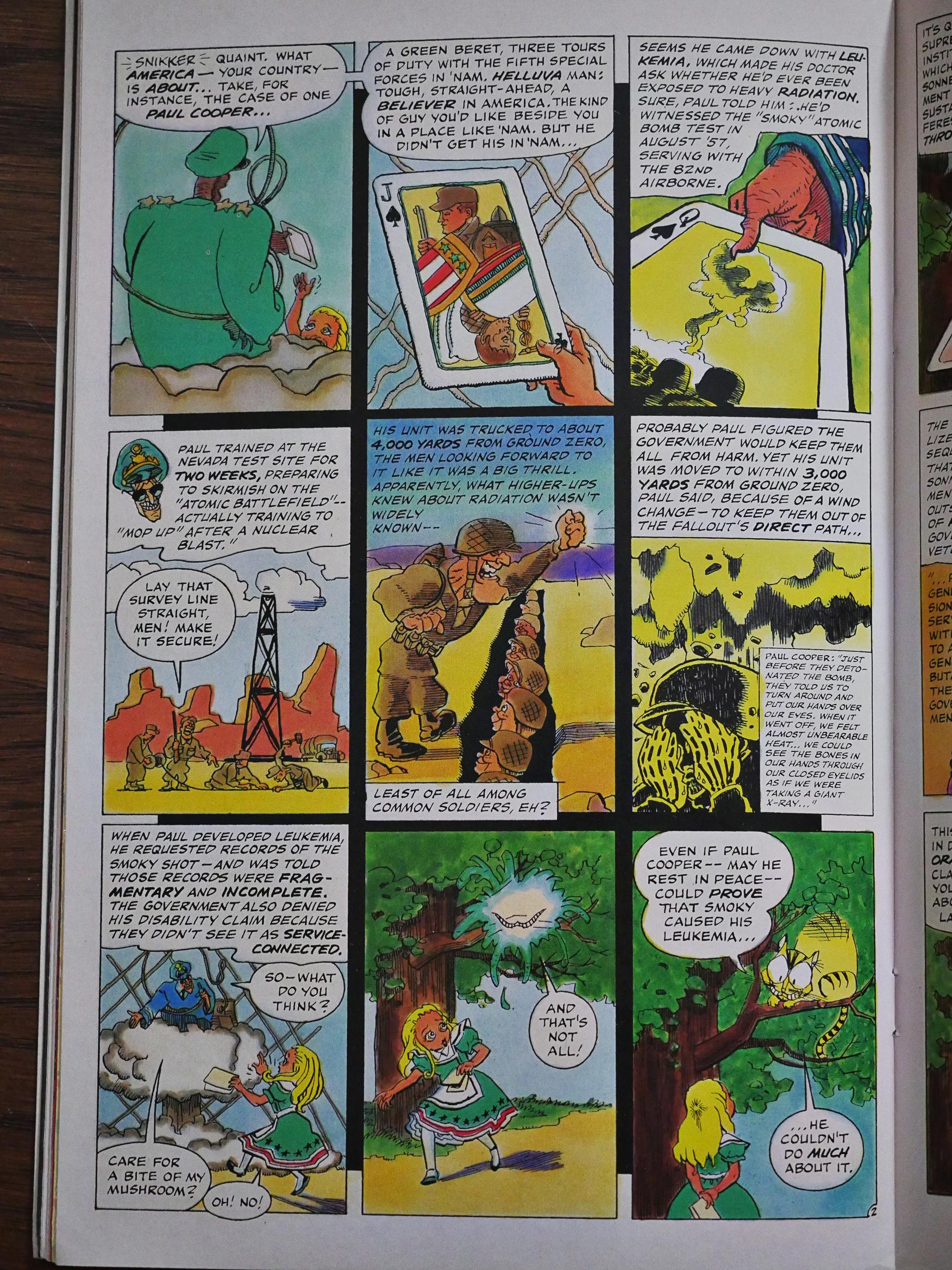
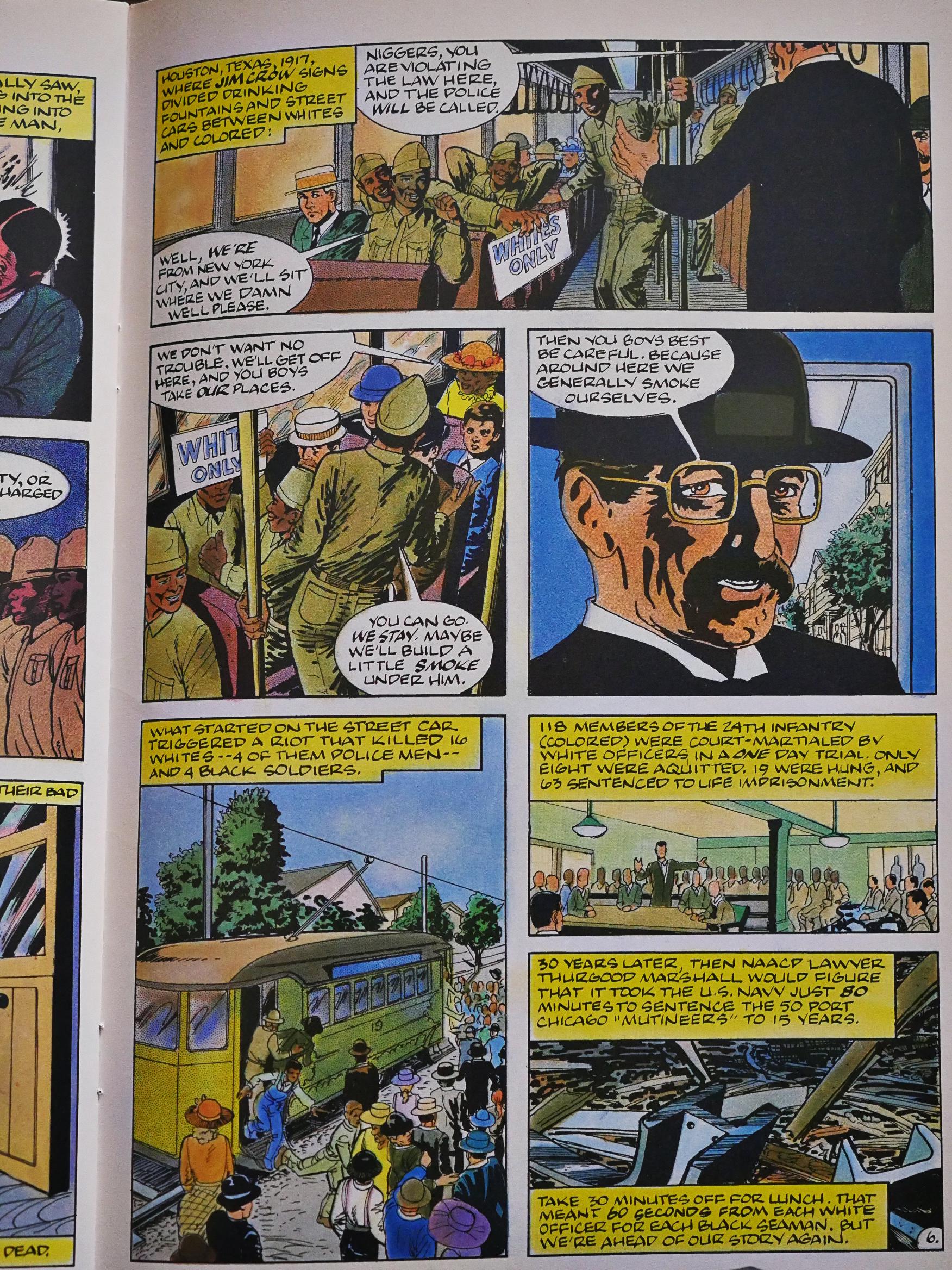
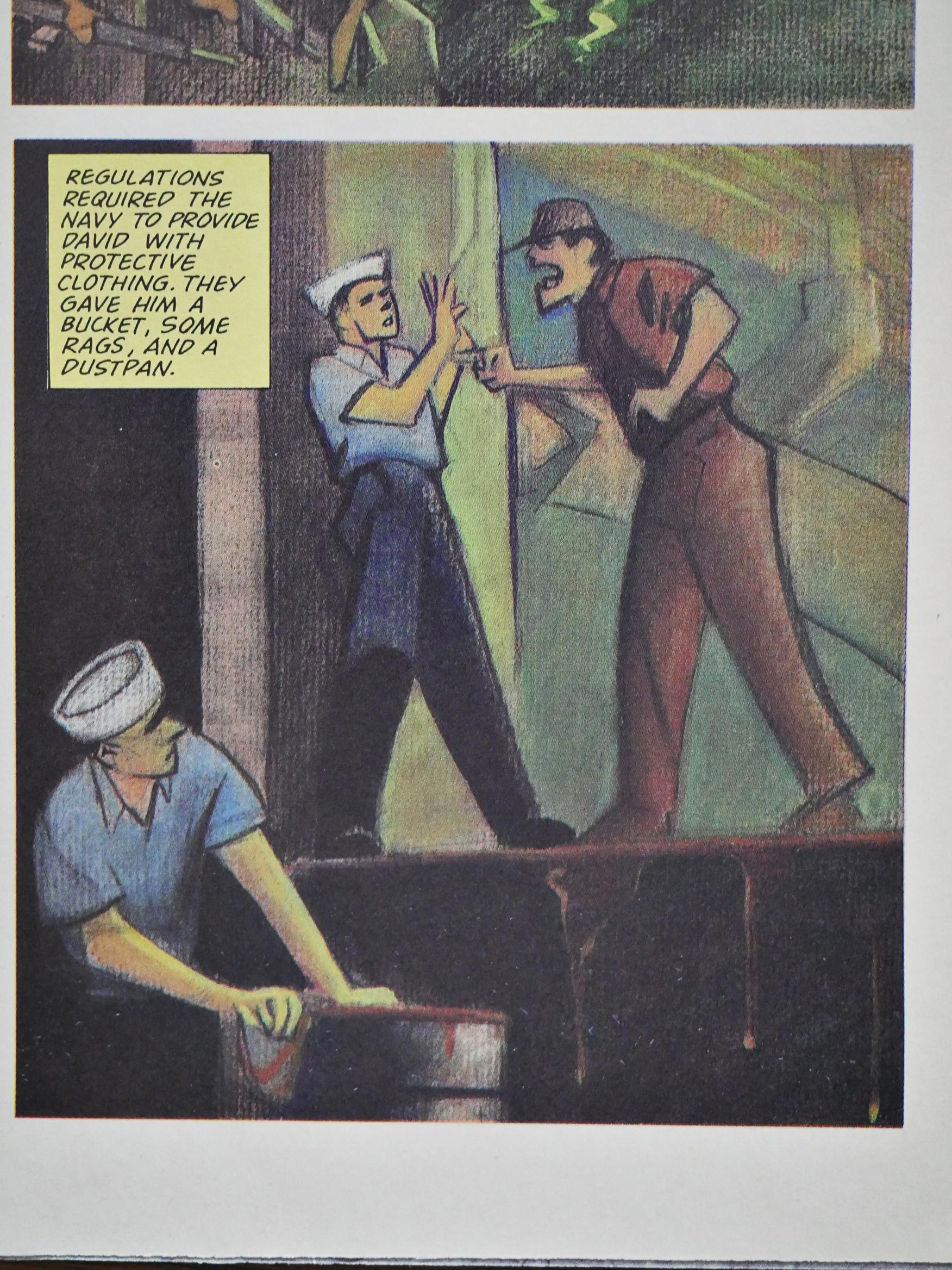
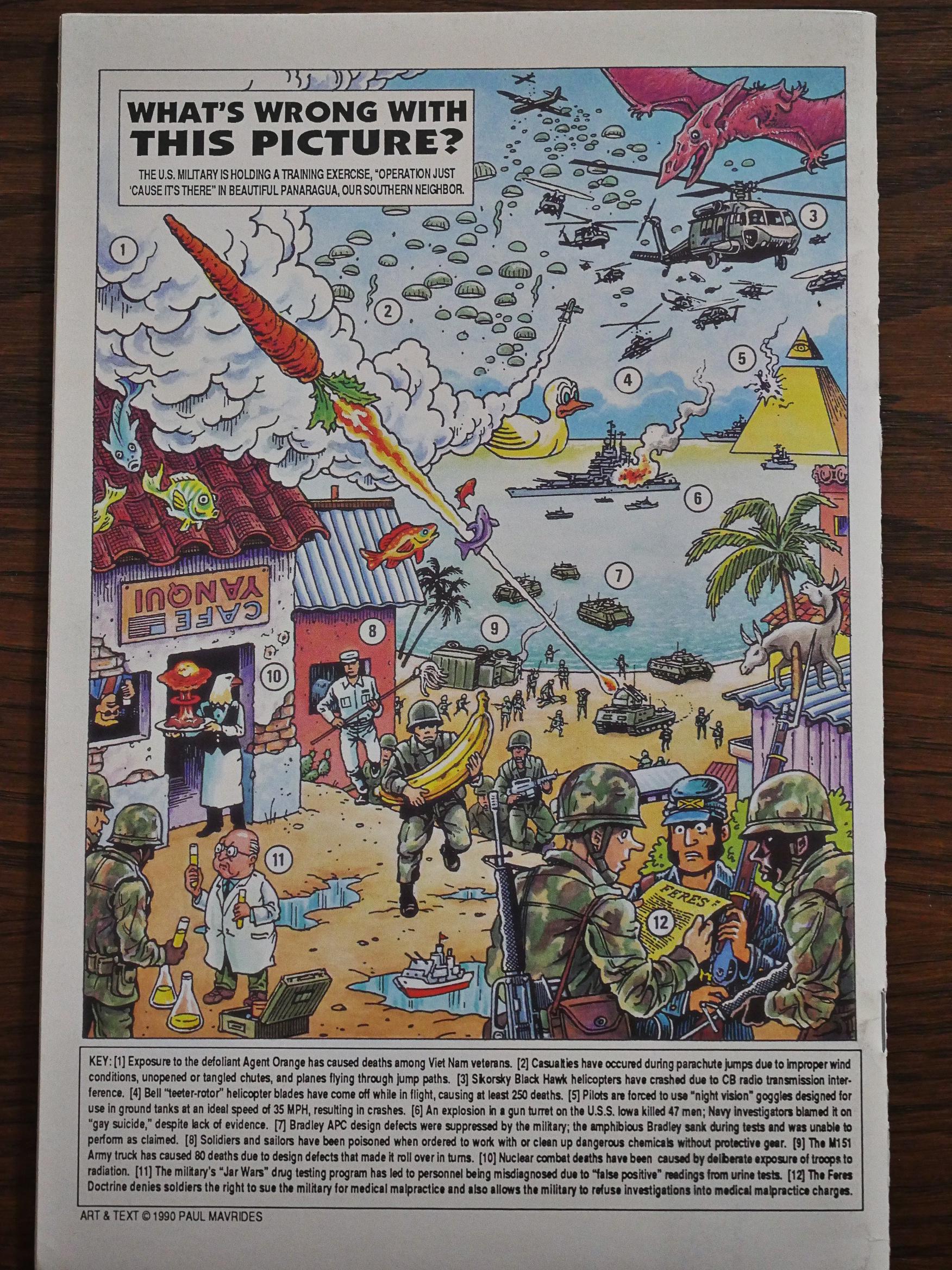
I was serving in the US Navy when this came out and I read the second issue; never saw the first. While I applaud the anti-war stance of it, and much of the anti-military organization criticism; there is a lot of pure propaganda within it. Not outright falsehood, but a rather massaged view of several stories and topics. The military is filled with horror stories, poor leadership, hazing, stupidity and even mentally unstable behavior. But not in its entirety and it is not the only story out there. They ignored anything that didn’t fit into that worldview, as propaganda is want to do. That said, there were some great pieces in it. The angry Babner/Wayne Vansant thing is an adaptation of Marine General Smedley Butler’s book, War is a Racket!, which detailed his time during the US incursions into Latin America, in the early 20th Century, including Nicaragua. Butler spoke of spending more time dealing with US banking interests than administering the military governorship of Nicaragua. He also was later approached by moneyed interests, during the Great depression, to lead a military coup again the Roosevelt Administration, which he reported to the government, since he actually believed in the oath he took to “..defend the Constitution against all enemies, foreign and domestic.” He is a true military hero, as he both won the Medal of Honor for valor, but continued to show that same valor and leadership in attacking the moneyed interests that use the military as their muscle in spreading their economic control.
This was an important piece of work; but, it is by no means without criticisms. I would also say that Don Lomax’s Vietnam Journal is a more balanced look at the horror of war and military service, from someone who lived it, and had a more complex view of the military and the uses of it by civilian authority. The military is always an extension of the political philosophy in government and does not set its own agenda. Also, there was no Draft at the time it was published or since; the draft was abolished in the 1970s, so there was no need to avoid it. There was a law requiring registration for Selective Service; but, that was not the same as being drafted into the military. The military was all-volunteer, including those who later tried to claim to be conscientious objectors, during the Gulf War. I was a naval officer and had no desire to end up in the war zone; but, I volunteered to serve in the military, in exchange for a college education; same as most everyone else. You can’t volunteer and claim you didn’t know you might be called to fight in a war. This wasn’t Vietnam.
Pingback: comicsbeat.com